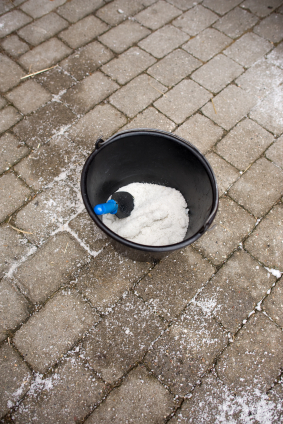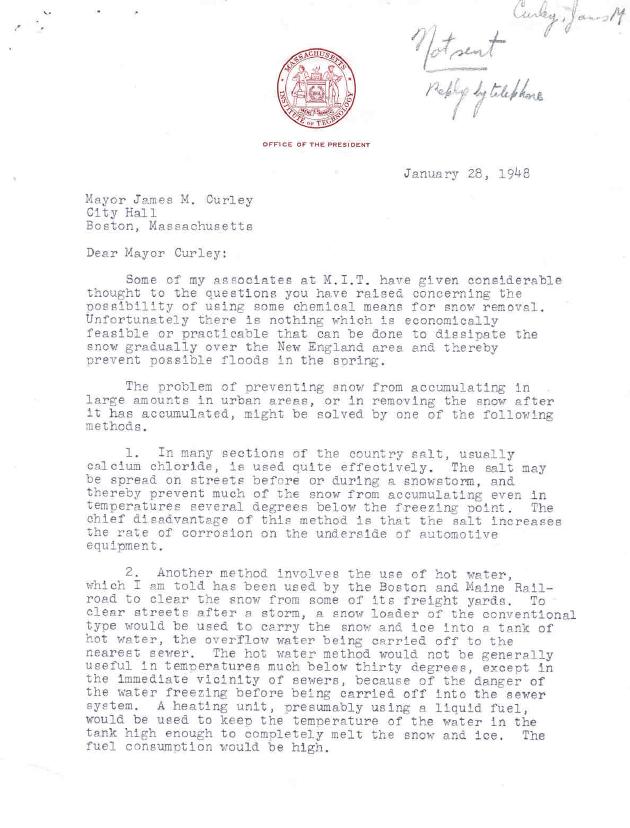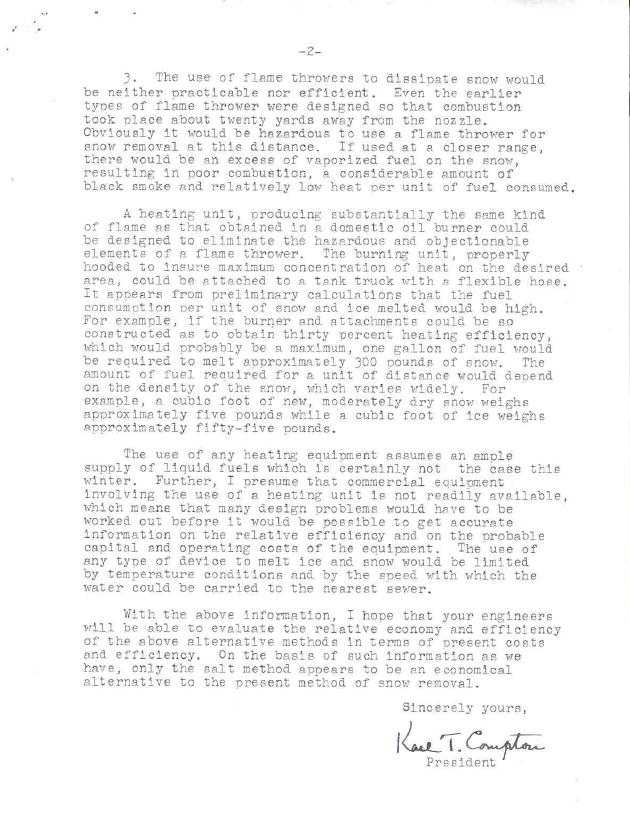1948 MIT President to Mayor: Try Salt
-
-
slice.mit.edu
Filed Under
Recommended

Nearly a week after 1948 Boston Mayor James Curley contacted MIT and asked if flamethrowers might effectively melt record snow, then MIT President Karl Compton drafted a response. "The use of flame throwers to dissipate snow would be neither practicable nor efficient," he wrote. His suggestion: Try salt.
In a typed message (which was never sent but instead relayed by phone) Compton outlined three options for the mayor to consider.
Salt, or calcium chloride, as he put it, would work well but could corrode the underside of automobiles. Alternately, snow could be transported to and melted in liquid-fuel heated hot water tanks, with the runoff disposed via sewer. However fuel consumption would be high, and it wouldn't work if temps dipped below freezing. As for the flamethrowers, Compton spent three paragraphs describing the relative merits and obstacles to such a method only to conclude that they too would be impractical and inefficient.
"On the basis of such information as we have," Compton wrote, "only the salt method appears to be an economical alternative to the present method of snow removal."
Last year, Massachusetts salt supplies were strained by near-record snowfall and freezing temperatures, and similar challenges are surfacing this year. On February 3, a newspaper in nearby Gloucester reported that city officials ordered 600 tons of salt on January 21, another 400 tons on January 27, and 600 tons again on Monday. The vendor, which is based in Chelsea, was only able to deliver 300 tons before the storm that began Tuesday. The rest is on backorder.
View more letters and MIT ephemera at the MIT Institute Archives and Special Collections website.









